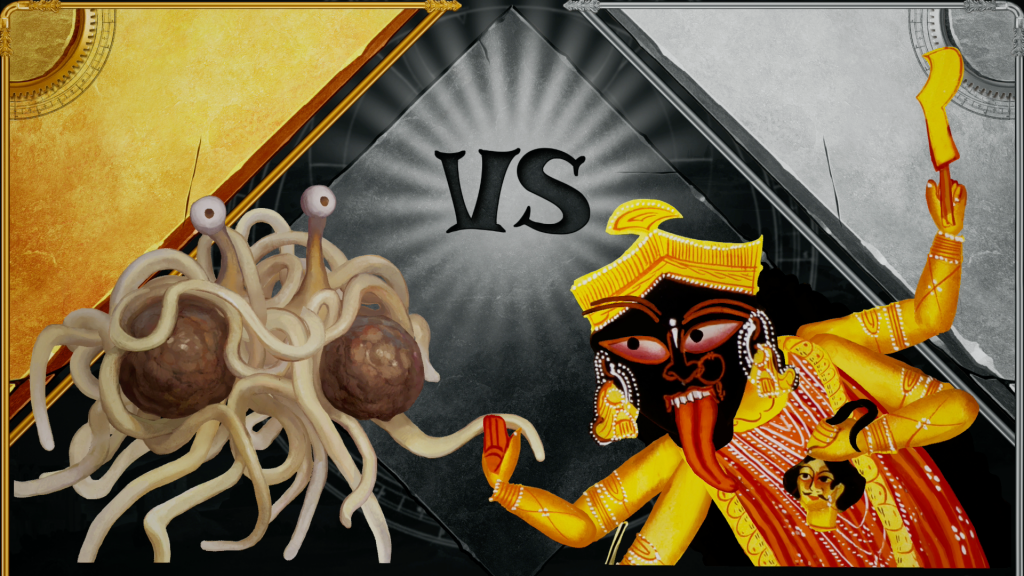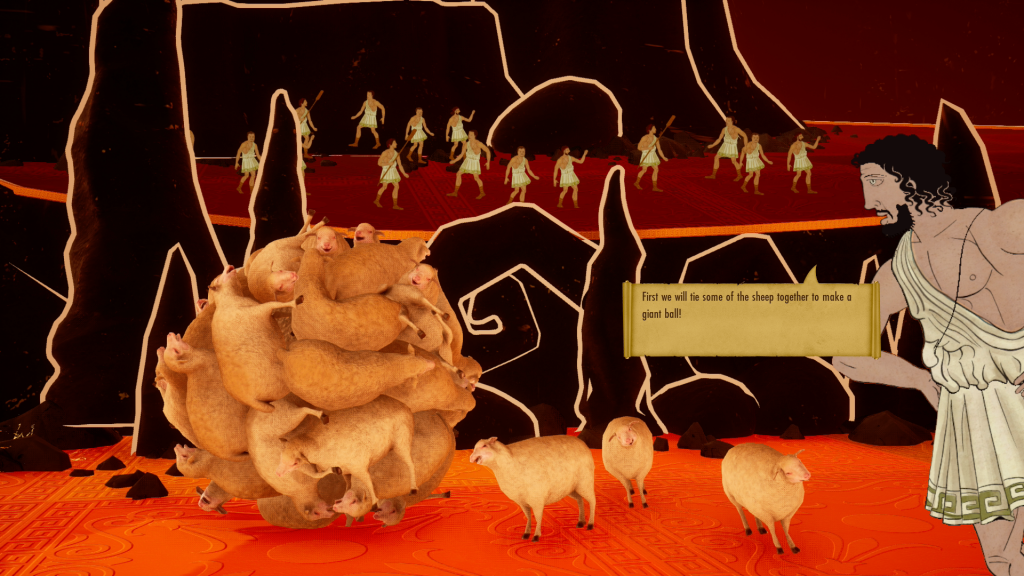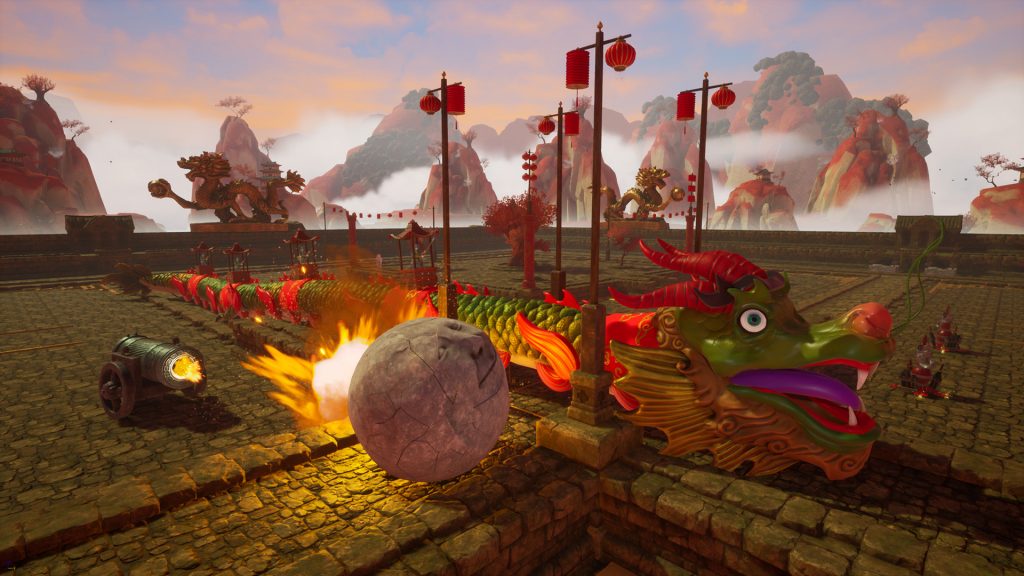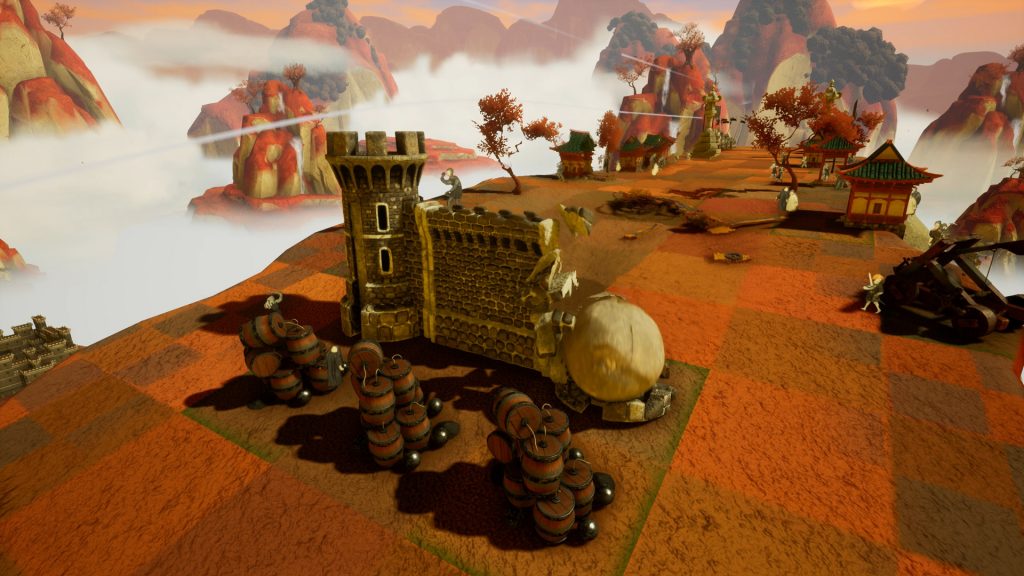I’m always happy to see weird and niche games return because it gives them another opportunity to either find an audience or further refine the concept. More often than not, the core idea is fine, it’s smaller things like execution or not anticipating smaller problems that cause problems. That is certainly how I remember Rock of Ages and something I had hopes to see resolved in Rock of Ages 3: Make & Break. With ample time to explore the concept, is this a smashing success or is it an experience that should roll over a cliff and end?
Surprisingly, Rock of Ages 3: Make & Break features something of a story mode. Most of it is presented as crude drawings and extremely stiff animation that gives you a sense of what is going on. Most of the action is centered around conflict relating to a wide variety of quirky and notable characters. What stands out the most is not really what is being conveyed, as much as the way ACE Team presents it.

Perhaps the best way to understand the humor is by looking at the introduction to one of the many notable characters, Kali. If you’ve never heard of Kali, she is a Hindu goddess and is known as the destroyer of evil forces, among other things. As for the actual opening, it features a variety of gods and goddesses defeating various monsters in a somewhat quirky and silly way which, I quite honestly, want to say feels like a long reference to the X-Men Animated Series from 1992 opening. It even has similar-sounding music that immediately made me think of the series. It’s silly things like this, spaghetti monsters and even Queen Elizabeth shooting lasers from her mouth that, if nothing else, makes the experience stand out.
Where Rock of Ages 3: Make & Break starts to fall behind is really gameplay. While there are a wide variety of variations and takes on the core concept, the main three gameplay ideas are pretty basic.

At its core, Rock of Ages 3: Make & Break is a weird cross between a tower defense game and something like Super Monkey Ball. One of the main modes is centered around various variations of setting up traps and problems for your opponent to overcome. This might be a well-placed wall, launchpad, or a creature that hinders progression. Ideally, these forces will destroy the opposing rock but in the event, you fail, any damage will reduce impact and allow your castle to withstand more attacks.
When you’re not defending, players need to navigate down twisty and confusing roads some kind of endpoint, typically a building or like the buckets you see in Skee-Ball, with your speed and accuracy determining success. At first glance this seems like a rather basic meta, get the boulder to the bottom with as little damage as possible, going at the max speed towards the end. On a conceptual level, this is a successful strategy. Where it falls behind is, every second you’re not moving, your opponent has the opportunity to move ahead. This might mean more traps, fewer obstacles on their end, more time to damage your base, or just overwhelm you resulting in mistakes.

These deeper concepts are instrumental in how successful you are online. Top players will either have a good idea of how to navigate stages, lay frustrating traps, and more, meaning you need to do more than just get to the end or build an amazing defense. Unfortunately, this is also where the AI falls a bit short.
In earlier stages especially, the AI provides no actual challenge. I will be completely honest, I don’t have the patience to build amazing traps, especially against the AI, so I’ll just build a wall and throw down some things that deal damage. Surprisingly, this will often do extreme damage to the AI and in some cases is enough to win. Even in weirder games the amount of difficulty just isn’t there.

Among the wide variety of mini-games is one where you need to roll into specific objects and then go into the aforementioned Skee-Ball hole. When I attempted this against the AI, it rarely hit targets and despite beating me to the end, made no real difference. Given each target gives 10 points and the ending multiples it by up to six, you could very realistically get 1,200 points and be nearly unbeatable, yet the AI beat me to the end all three rounds and had 80 points. On the final round, I just backtracked, got every target, and had more points than their total in that one round and effortless won. Later stages do more, it just never hits a really engaging point.
This is unfortunate, as there is a lot to see and actually do, even if you never make your own custom level. Between 23 different objects, you can control and like 27 traps, you have plenty of options. Even the controllable objects have a wide variety of stats ranging from how long it takes to roll, damage, speed, and more. Each item has similar logic, including cost and other elements all building to the previously explained depth in Rock of Ages 3: Make & Break.

Outside of the story and online, players can also make their own levels and play them online. This is far from the most fluid creator I have ever messed with but it does give you plenty of options to be as sadistic or engaging as you want to be. If nothing else, it gives creators a chance to create experiences that extend into the type of experiences they prefer and players to find those that match their needs.
Rock of Ages 3: Make & Break Verdict
For the most part, Rock of Ages 3: Make & Break is going to appeal to a very specific type of gamer. The core mechanics, while interesting, aren’t exactly amazing or something you need to experience. At best there is a certain novelty and at worst there is the same frustration you might experience playing Mario Kart. The story follows a similar path. It’s quirky and fun, just the humor is something you either love or hate, something that is also true for the art direction. As a result, it’s hard to say Rock of Ages 3: Make & Break is something that will rock the ages, though fans of the series will likely enjoy it.
[Editor’s Note: Rock of Ages 3: Make & Break was reviewed on PS4 platform. The game was provided to us by the publisher for review purposes.]

